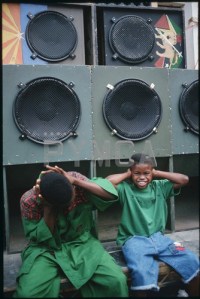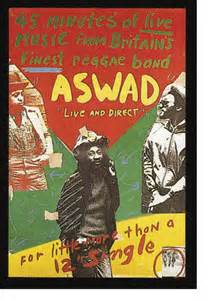
Praise You – Fatboy Slim
We’ve come a long, long way together – through the hard times and the good
I need to celebrate you baby I need to praise you like I should…….
*
March 1971 was my first visit to The Goldstone Ground in Hove, to see Alan Duffy, Brian Powney in goal, John and Kit Napier, Peter O’Sullivan, John Templeman, Norman Gall. Amazing that I can remember pretty much the whole team. Tattooed on the brain. Went with a group of kids from the Lewes Priory football team : Martin Cooper, Conrad Ryle, Simon Lester – we played on Saturday morning then went into Brighton in the afternoon for a Division Three game v Port Vale. We stood in the North Stand with the hooligans, scarves wrapped around our wrists. Jumped up and down singing Knees Up Mother Brown and the Banana Splits Song. A year later, we were the hooligans, marching through the cold wet streets of Watford and Luton singing our songs of Albion and war. Andrew Holmes joined the gang. John Hawkins. Paul my brother. Conrad’s older brother Martin was a regular too but he stood in the Chicken Run – the East Stand which was a stone terrace with a few metal railings to lean on (prized positions). That season we played Aston Villa on Good Friday and Reading on Easter Monday – maybe it was the season after, standing in a crowd of 36,000 people. As a slightly dysfunctional teenager with a tenuous and insecure family life, the idea of playing at home was powerful. For an atheist to stand with my fellow man and woman and sing in our thousands replaced any religious feelings I may have had left by the age of fourteen. In other words, I was hooked.

The legendary Brian Clough came down to manage us with his assistant Peter Taylor. The most memorable game from that tenure was an 8-2 home defeat to Bristol Rovers, still a club record failure, and a 0-4 defeat in the FA Cup to Walton & Hersham, a part-time club. Clough would go on to two European Cup wins with Nottingham Forest and was the best manager that England never appointed. Taylor stayed and signed Peter Ward who became club legend goalscorer, but was replaced with ex-Tottenham & England man Alan Mullery – he became a club legend manager himself and took us to promotion in 1979 away at Newcastle United. By now I was a student at the LSE. I would come down for games on a Saturday, and my Glaswegian friend Lewis McLeod would come along too, despite being a Rangers fan. By now we were standing in the Chicken Run. The team swept all before them and rose to the elite with a 3-1 win at St James’ Park. I travelled up alone on the train, even bravely venturing into a Newcastle public house on my own before joining the huddled masses in the Away end, celebrating a legendary victory and travelling back on the train with the blue & white family and endless cans of beer and joy.

Manager Alan Mullery with the team 1980
The following season we went to some exciting away games – Manchester City, Aston Villa, Tottenham Hotspur. I got punched at Tottenham after the game. Martin Ryle told a mounted policeman about it and pointed out who’d hit me and we saw the kid getting sandwiched between two police horses just down the High Road. Enjoyed that. Four seasons in the top flight. On Match Of The Day now and again. Nobby Horton in midfield, Steve Foster playing centre-half, with a headband. Mike Robinson, Gordon Smith, Jimmy Case. Beating Liverpool in the Cup two seasons running, playing Sheffield Wednesday in the semi-final at Highbury literally a few hundred yards from where I lived with Mumtaz in Finsbury Park in 1983, Winning 2-1. Sitting on my stoop with my scarf on watching the fans streaming away from the game. Magic. Failing to get Cup Final tickets, watching on TV as Jimmy Melia’s team drew with Manchester United 2-2 and almost winning in the final minute. And Smith Must Score…ohhhhh. But Robinson should have scored in retrospect. We lost the replay 4-0 and were relegated in the same season.
Things declined after that, gradually. At some point in the 1980s I started to collect grounds – and picked up places like Sheffield Wednesday, Ipswich Town, Fulham, Leicester City and Rochdale. The chairman Mike Bamber who’d brought in Mullery lost control and this fuckwit called Bill Archer took over. Greg Stanley was his stooge on the board. And David Bellotti, failed Lib Dem candidate for Eastbourne was his gofer. Between them they nearly took the club to extinction. By now I was sitting in the West Stand when I came down for games – I’d now watched the team from 3 sides of the Goldstone Ground. Just as I moved back to Sussex and had a season ticket for the first time in my life, things went downhill rapidly.
Albion walk out for their last home game at the Goldstone, 1997
I made friends with Ian Hart, Worthing undertaker who ran a fanzine called Gull’s Eye with Peter Kennard and I wrote a few columns for them about the resistance movement. We became aware that Archer was planning to sell the ground “to pay debts”. A huge campaign got underway to resist this asset-stripping. We picketed the ground one day and tried to stop fans from going in. Thousands stayed outside, then broke through the flimsy gate of the Chicken Run at half time and got onto the pitch and up into the director’s box, mingled with the away fans too, all of whom were aware of our plight and supported us.

There was a Fans United match at the Goldstone (which I couldn’t make) when we played Hartlepool, and Doncaster Rovers in particular had helped to organise fans from every club come down and publicise what was happening to the Albion. Bellotti was barracked at every game and had police protection – although he never came to any harm, often he would be asked to leave by the police.

Then the York City game at the end of the ’96/97 season when the pitch invasion after 15 minutes left a broken crossbar and a huge sit-in with match abandoned. 2 Points deducted but now everyone knew what was afoot, too late to change the outcome.

 Dick Knight took over but the sale was done. The last game at The Goldstone, our home, was against Doncaster Rovers. It was like a funeral. I sat in the South Stand for the first and last time, and had watched my team from all four sides of the Goldstone. We ran onto the pitch after the match and people started take the place apart for keepsakes. Seats. Signs. Anything. I got a large chunk of the pitch which I kept in a flowerpot in the garden, trimmed with scissors and sporting a subbuteo goal. Meanwhile after being 13 points adrift at the foot of the table we finally need a point in the last game, away to Hereford United which meant the losers were out of the League. I couldn’t face the implications or the game and chose to go to the Dome for a Mahler concert on a Saturday afternoon, swerving the tension and feelings of sickness, coming out at 5pm and asking the nearest bystander the result. Pre-internet of course. We drew 1-1, Robbie Reinelt scoring the all important goal – Hereford were down and out, we’d survived. This period of the Albion’s history – the guerrilla warfare, the back-stabbing, the surge of fan’s anger and magnificent commitment to their club is recorded by Steve North and Paul Hodson in the memorable book Build A Bonfire.
Dick Knight took over but the sale was done. The last game at The Goldstone, our home, was against Doncaster Rovers. It was like a funeral. I sat in the South Stand for the first and last time, and had watched my team from all four sides of the Goldstone. We ran onto the pitch after the match and people started take the place apart for keepsakes. Seats. Signs. Anything. I got a large chunk of the pitch which I kept in a flowerpot in the garden, trimmed with scissors and sporting a subbuteo goal. Meanwhile after being 13 points adrift at the foot of the table we finally need a point in the last game, away to Hereford United which meant the losers were out of the League. I couldn’t face the implications or the game and chose to go to the Dome for a Mahler concert on a Saturday afternoon, swerving the tension and feelings of sickness, coming out at 5pm and asking the nearest bystander the result. Pre-internet of course. We drew 1-1, Robbie Reinelt scoring the all important goal – Hereford were down and out, we’d survived. This period of the Albion’s history – the guerrilla warfare, the back-stabbing, the surge of fan’s anger and magnificent commitment to their club is recorded by Steve North and Paul Hodson in the memorable book Build A Bonfire.

Albion legend, another saviour : Dick Knight
But the ground had been sold for £7 million and we were homeless. Debts were paid but one year later the Goldstone was re-sold : this time for £28 million. It turned out that Bill Archer had sold the ground to himself and then made a £21 million profit out of our homelessness – the worst kind of scum. Albion played at Gillingham for two seasons, 75 miles away, to meagre crowds and an impoverished atmosphere. I usually drove there, and we’d congregate in the pub, defiant, phlegmatic. The spirit of the fans and our indomitable sense of humour is illustrated beautifully with a small anecdote from Colchester United FC where I’d gone with Martin Ryle and his son Jude for a League game. Fans being cruel the Colchester massive taunted us with “Where’s The Goldstone gone, where’s the Goldstone gone?” to the tune of Chirpy Chirpy Cheep Cheep. Came the immediate response from the Albion faithful : “It’s a Toys R Us, it’s a Toys R Us“. We have the best songs – out of necessity. When we hear “Town full of queers” (Guantanamera) or “Does Your Boyfriend know you’re here?” (Bread of Heaven) we traditionally sing “You’re too ugly to be gay“. I’m proud to be a Brighton fan, not afraid to sing about being gay. Came home with relief to the Withdean Stadium in 1999, an athletics track converted with temporary stands and a two-bob portakabin atmosphere. Micky Adams arrived and bought young striker Bobby Zamora and suddenly we were on the up again, winning two promotions in successive seasons. I met him once at a Club do, just as it had been announced he was leaving for Leicester. I think he’d been getting stick all night because when I thanked him for everything and wished him all the best for his future he was genuinely pleased and thanked me in return. But it was all two steps forward, one step back, what we needed more than anything else was a proper ground. The campaign for Falmer Stadium was long and bitter and took in various local heroes like Paul Samrah, Paul Whelch (RIP another LSE graduate), Norman Cook (Fatboy Slim) and Skint Records, Paul Camillin, Dick Knight of course and John Baine – Attila The Stockbroker – with whom I’d made a protest single – ‘We Want Falmer‘ b/w ‘Sussex By The Sea‘ which got to number 17 in the charts (see My Pop Life #51). One of my more memorable days was the protest outside the Labour Party Conference on Brighton Seafront when one fan appeared with a sign reading : Prescott : Mother Cooked Socks In Hull.

Skint Records and Norman were having a moment or three in the sun. Based in Middle Street in The Lanes, with co-owner & Arsenal fan Damian Harris as Midfield General (I would later appear on one of his records) and Norman as Fatboy Slim they adopted the Seagulls in 1999 and provided shirt sponsorship during this critical 9-year period. My favourite Albion shirt has their name on it.

The logo was pertinent and a frank admission of status – we were broke. Rumour had it that Norman was paying Bobby Zamora’s wages in exchange for a car-park space : the many ramifications of playing at Withdean included a no-parking zone around the stadium. I used to park and walk like many other fans – sometimes I’d take the bus from the bottom of Trafalgar Street after a few pints of Harveys.

Norman – and his wife Zoe Ball (now separated) – are integrated members of the Brighton & Hove community, around and about at openings, screenings, football matches, club nights and very supportive of the local scene – like their local successful brothers Stomp – in many and diverse ways. They were at the premiere of The Murmuration (see My Pop Life #87 ) at The Booth Museum in Dyke Road. Norm was an usher at Patrick Sullivan‘s wedding in Rottingdean when we all went to the pub both before and after the service. I once watched a Liverpool v Chelsea European Cup game round his house with Jim and Pat which was faintly awkward – I was the only one supporting Liverpool… then I called Norman once to ask about vintage recording equipment as texture for my abandoned Session Musician documentary Red Light Fever (see My Pop Life #116) and others) and he very kindly offered me some interesting space to shoot an interview with bass player Les Hurdle (who’d recorded with Giorgio Moroder and The Foundations among others). We’ve seen Norman DJ at two World Cups – in Cape Town and Rio de Janeiro parties, playing records for football fans. He is a proper decent bloke, and very good at his job needless to say. The records that Skint put out at the end of the 20th & beginning of the 21st Century helped to define Brighton as the number one party city in Europe – Rockefeller Skank, Right Here, Right Now, Praise You, Weapon of Choice, Gangster Trippin’ and many remix remake remodels too. We all celebrated the big beat culture which started on Brighton seafront and conquered the world, peaking in July 2002 when 250,000 flocked and danced to Big Beat Boutique 2 where the Skint DJs partied all day and all night between the piers.

Big Beach Boutique II, July 2002, Brighton Beach
Planning permission for Falmer Stadium was finally granted after a long struggle. Nobody wanted the football fans on their doorstep. Every version of the plan for a stadium was met with objection. But it happened. We’d fought an imaginative campaign and got the nod – Martin Perry was instrumental in achieving the result and building the actual finished stadium, alongside every single Brighton fan from that time, including my friend Ian Andrews who’d worked at the club since the 90s being brought in by Dick Knight, and running the accounts through the Withdean years. I would sit with Ian, David Cuff, Adrian Simons, Julian Benkel and Mark Griffin – and indeed with actor Mark Williams during this period – or we would meet in the Lord Nelson on Trafalgar Street, famous Albion pub. All good friends still.

All the trials and tribulations have brought the club closer to the city of Brighton. We are now a true community club. After all the noise, litter and scare stories about the middle class enclave of Withdean being invaded by football hooligans, the last game there was rather emotional.
As promotion to the Championship beckoned, Julian and myself went on a few last away trips to places where I didn’t think the team would be playing again (with respect to those clubs of course) : Hartlepool United, Northampton Town, Dagenham & Redbridge. Ian gave me a hard hat and showed me around the Falmer foundations one memorable afternoon in 2009 :

Myself and Ian Andrews, Falmer Stadium 1st December 2009

The Amex today – photograph ©Peter Whitcomb
The first game at the new stadium was a friendly against Tottenham Hotspur – my wife’s team and all of her family. We had season tickets to the new ground, David Cuff had been among the first to gain access and we were 12 rows back from the front, bang central, near the dugouts where the managers, trainers and substitutes sat and alongside the press box. When the music of Sussex By The Sea started up across this magnificent sparkling brand new arena filled with fans, and the two teams walked out onto the sacred green sward, a tear rolled down my cheek and my chest was full of emotion. Home. Our Home. And the first League game was against… Doncaster Rovers. By then the chairman was Tony Bloom who been on the board for many years but slowly acquired a greater percentage of control. Dick Knight was made President for Life, and Tony funded the stadium and, later, the brand new state-of-the art training ground at Lancing near Shoreham Airport. A Brighton fan all of his life, two of his uncles were on previous Boards of the club. Bloom made his money in online gambling and has now invested over £250 million into Brighton & Hove Albion. That is a local hero.
We still can’t match the budgets of our main rivals – this season Newcastle United, Aston Villa and Norwich. But life isn’t all about money. There is something about trying to win games of football which is a mystical alchemical process – a team event at which all have to be present, an undefined nebulous concept called confidence, determination, spirit, something a manager worth his salt can produce in players, week in, week out. Gus Poyet managed it with a legendary season in the final year at Withdean ( final away game at Walsall pictured below) when we were promoted once again.

Andy Holmes (for it is he), Julian Benkel, David Cuff at Walsall

We opened Falmer Stadium – now called The Amex in the Championship. At the end of that magnificent 2nd season in the new arena, we stumbled at the final hurdle in a terrible match at home to Crystal Palace in the play-offs as Poyet reportedly had resigned to the players in the dressing room before the game. Or was he pushed? His relationship with the club had deteriorated to an alarming degree over those final months, but it was a fatal flaw in a great footballing brain. I met Gus on the tube once in London and he was sincerely enthusiastic and charming talking about The Seagulls. Oscar Garcia and Sami Hyypia came and went and then Chris Hughton, ex Spurs defender and living legend arrived and took us to the play-offs once again last season – the third time in four years. Over the disappointment of last summer – 2016 – he kept the same group of players together and added a spine – Duffy, Murray, Norwood, Sidwell. Anthony Knockaert was our enlightenment, Bruno Salter our soul, Lewis Dunk our local hero along with Hailsham boy Solly March, Dale Stephens our midfield maestro along with Beram Kayal, David Stockdale our rock between the sticks, Glen Murray our shark goalscorer, Tomer Hemed our spearhead. Chris Hughton our football genius. Tony Bloom our saviour.

Tony Bloom celebrates Promotion 2017
Since moving to New York in 2014 I’ve let my season ticket lapse. I’ve watched two games per season basically. Last season I wandered in to two more grounds – Bolton Wanderers and Wolverhampton Wanderers. I saw two games this season, both at home, against Huddersfield and Leeds : both tough games, both wins. We’ve been in the top two all season, have now been promoted to the Premiership and are one win away from the title – first place – and the Championship Trophy which will represent the finest achievement of this football club in it’s 116-year history. A new chapter awaits.

Anthony Knockaert celebrates at the Amex. The Premiership beckons
I’ve been watching games on my computer where I can. Following on Twitter. I’ve had a lifetime of watching the Albion, ups and downs. I miss the pints and the cameraderie, the team sheet and the songs. The moaning about the ref. The irritating opposition player. The pies. But at least now I get to watch the team on TV – for here in America, all the Premiership games are screened live. You can record them. And doubtless I’ll be in England to watch one or two.
We have come a long long way together. I need to celebrate you baby. Yesterday, 17th April 2017, my beloved Brighton & Hove Albion were promoted to the Premier League.






 Michael Buffong, Artistic Director of Talawa Theatre
Michael Buffong, Artistic Director of Talawa Theatre
 Rudolph. With his screen wife and fellow Trini Nina Baden-Semper they withstood the slings and arrows of white 1970s Britain over 7 series for ITV living next door to racist Eddie Booth (played by Jack Smethhurst) and his non-racist wife Joan (Kate Williams). At the time I think it was a kind of ITV riposte to Til Death Us Do Part starring Warren Mitchell, the most famous racist character on British TV at that time. But Love Thy Neighbour actually had black characters and represented their experience, so Rudolph became the first prime-time black actor on British TV and thus the most well-known black actor in Britain for years as a result of this show, which he is clearly very proud of. Many people thought the series was offensive because the racist Eddie’s favourite phrase was ‘nig-nog’ and he would insist that white people were above black people. It was totally on the nose and you know how the British like everything to be unspoken and under the carpet if possible. So while Warren Mitchell and ‘Til Death got all the cultural credit, Love Thy Neighbour became an embarrassment and is no longer repeated in TV schedules. I hope I’m not overstating things here. Rudolph is extremely phlegmatic about all this and carries his fame, the controversy and his part in it lightly and with grace and charm. If you push him though, he’ll defend it to the hilt. It showed the English who they were, and it showed many of the Caribbean immigrants who they were. Which was more radical? Rudi and I used to breakfast together in our little seafront hotel, and one morning he met Jenny who’d only recently become (officially anyway) my main squeeze (see
Rudolph. With his screen wife and fellow Trini Nina Baden-Semper they withstood the slings and arrows of white 1970s Britain over 7 series for ITV living next door to racist Eddie Booth (played by Jack Smethhurst) and his non-racist wife Joan (Kate Williams). At the time I think it was a kind of ITV riposte to Til Death Us Do Part starring Warren Mitchell, the most famous racist character on British TV at that time. But Love Thy Neighbour actually had black characters and represented their experience, so Rudolph became the first prime-time black actor on British TV and thus the most well-known black actor in Britain for years as a result of this show, which he is clearly very proud of. Many people thought the series was offensive because the racist Eddie’s favourite phrase was ‘nig-nog’ and he would insist that white people were above black people. It was totally on the nose and you know how the British like everything to be unspoken and under the carpet if possible. So while Warren Mitchell and ‘Til Death got all the cultural credit, Love Thy Neighbour became an embarrassment and is no longer repeated in TV schedules. I hope I’m not overstating things here. Rudolph is extremely phlegmatic about all this and carries his fame, the controversy and his part in it lightly and with grace and charm. If you push him though, he’ll defend it to the hilt. It showed the English who they were, and it showed many of the Caribbean immigrants who they were. Which was more radical? Rudi and I used to breakfast together in our little seafront hotel, and one morning he met Jenny who’d only recently become (officially anyway) my main squeeze (see 
 Rudolph Walker
Rudolph Walker But Rudi and I stayed in touch and we would see each other from time to time, at theatrical first nights at the National Theatre, The Tricycle and other events, often he’d be with Dounne Alexander, now his wife. He was granted an OBE in 2006 and we went to the reception at the Trinidadian Embassy in London where a group of youngsters enrolled in The Rudolph Walker Foundation marched in to show discipline and leadership potential and honour their founder. It was pretty impressive. By then he had joined the cast of Eastenders playing Patrick Trueman where he works to this day, a cornerstone in the cultural landscape, representing the Caribbean in Britain, both in his life and on screen. It is an honour to consider him my friend.
But Rudi and I stayed in touch and we would see each other from time to time, at theatrical first nights at the National Theatre, The Tricycle and other events, often he’d be with Dounne Alexander, now his wife. He was granted an OBE in 2006 and we went to the reception at the Trinidadian Embassy in London where a group of youngsters enrolled in The Rudolph Walker Foundation marched in to show discipline and leadership potential and honour their founder. It was pretty impressive. By then he had joined the cast of Eastenders playing Patrick Trueman where he works to this day, a cornerstone in the cultural landscape, representing the Caribbean in Britain, both in his life and on screen. It is an honour to consider him my friend.







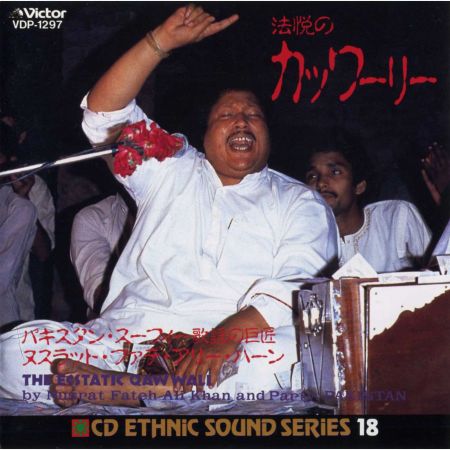




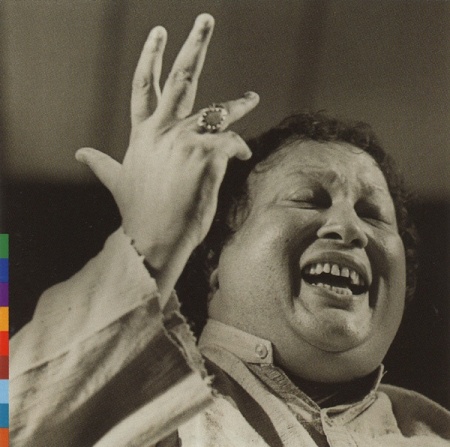


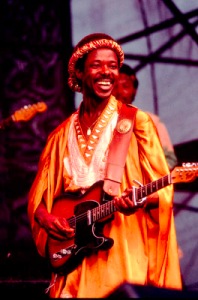

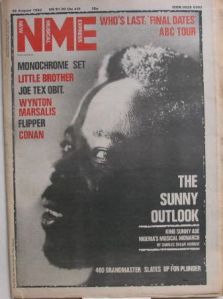 It was splashed all over the NME front page and could hardly be missed. On the Mango label, produced by Frenchman Martin Meissonnier and very definitely aimed at the western market, (at me!) it’s a brilliant record, a showstopper, showcasing Ade’s trademark Nigerian juju rhythms with a slight electro tinge. His best songs, usually 20 minutes long in their Nigerian context, are here shortened and sweetened, but not too much. The key component is the talking drum, held under the arm and squeezed, you can change the note of the drumbeat. So-called because they have been used as communication tools in West Africa for forever. As a musical instrument they are thrilling. I have one ! The other unexpected element is the beautifully evocative slide guitar. The production is immaculate and the whole package was a winner. I’ve chosen a beautiful song Ma Jaiye Oni to represent his juju beat.
It was splashed all over the NME front page and could hardly be missed. On the Mango label, produced by Frenchman Martin Meissonnier and very definitely aimed at the western market, (at me!) it’s a brilliant record, a showstopper, showcasing Ade’s trademark Nigerian juju rhythms with a slight electro tinge. His best songs, usually 20 minutes long in their Nigerian context, are here shortened and sweetened, but not too much. The key component is the talking drum, held under the arm and squeezed, you can change the note of the drumbeat. So-called because they have been used as communication tools in West Africa for forever. As a musical instrument they are thrilling. I have one ! The other unexpected element is the beautifully evocative slide guitar. The production is immaculate and the whole package was a winner. I’ve chosen a beautiful song Ma Jaiye Oni to represent his juju beat.









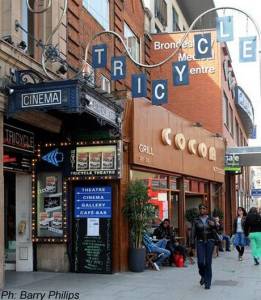

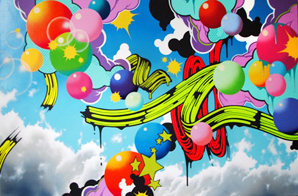
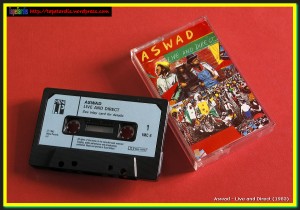
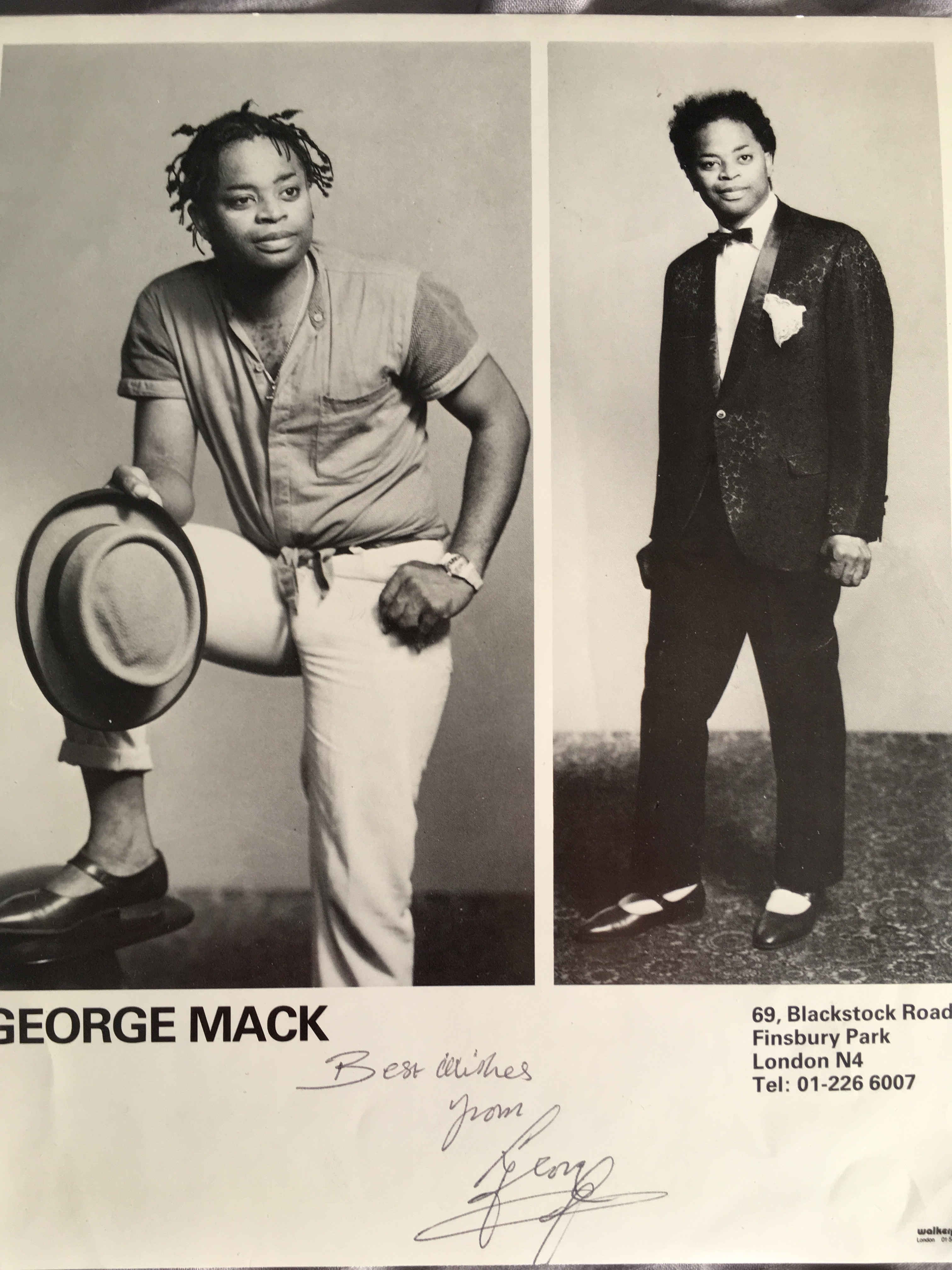
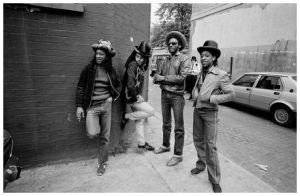
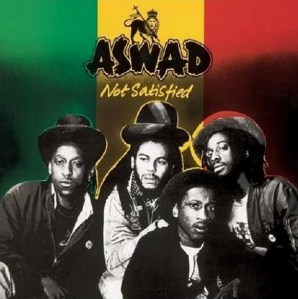
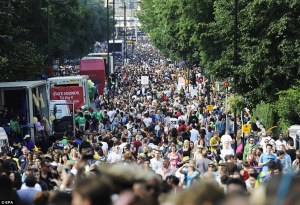 Carnival was amazing that year. Who knows why ? I’m sure it’s always amazing, but it seemed happy, packed, and the weather was perfect. Everyone was against Thatcher. Food was fantastic. And then in the afternoon at about 2pm Aswad took the stage and played one of the most beautiful powerful and righteous sets of reggae and dub that I’ve ever had the pleasure of witnessing. When I say they could play Warrior Charge/Dub Charge live – they could, they did. The horn section was sweet and tight, and they would go into a breakdown with Drummie staggering the beats and echoing the horn stabs to create the dub effect. Brilliant.
Carnival was amazing that year. Who knows why ? I’m sure it’s always amazing, but it seemed happy, packed, and the weather was perfect. Everyone was against Thatcher. Food was fantastic. And then in the afternoon at about 2pm Aswad took the stage and played one of the most beautiful powerful and righteous sets of reggae and dub that I’ve ever had the pleasure of witnessing. When I say they could play Warrior Charge/Dub Charge live – they could, they did. The horn section was sweet and tight, and they would go into a breakdown with Drummie staggering the beats and echoing the horn stabs to create the dub effect. Brilliant.